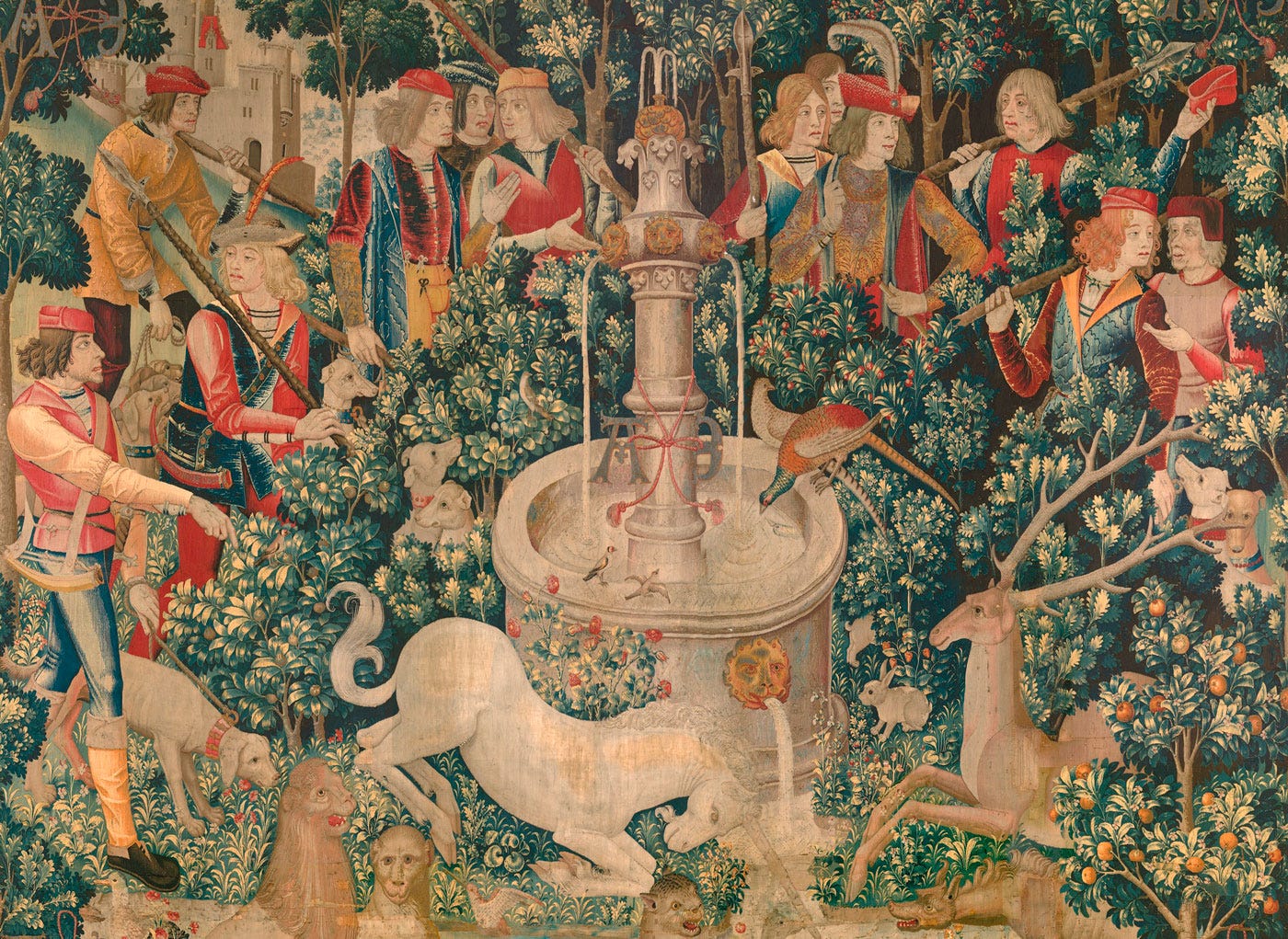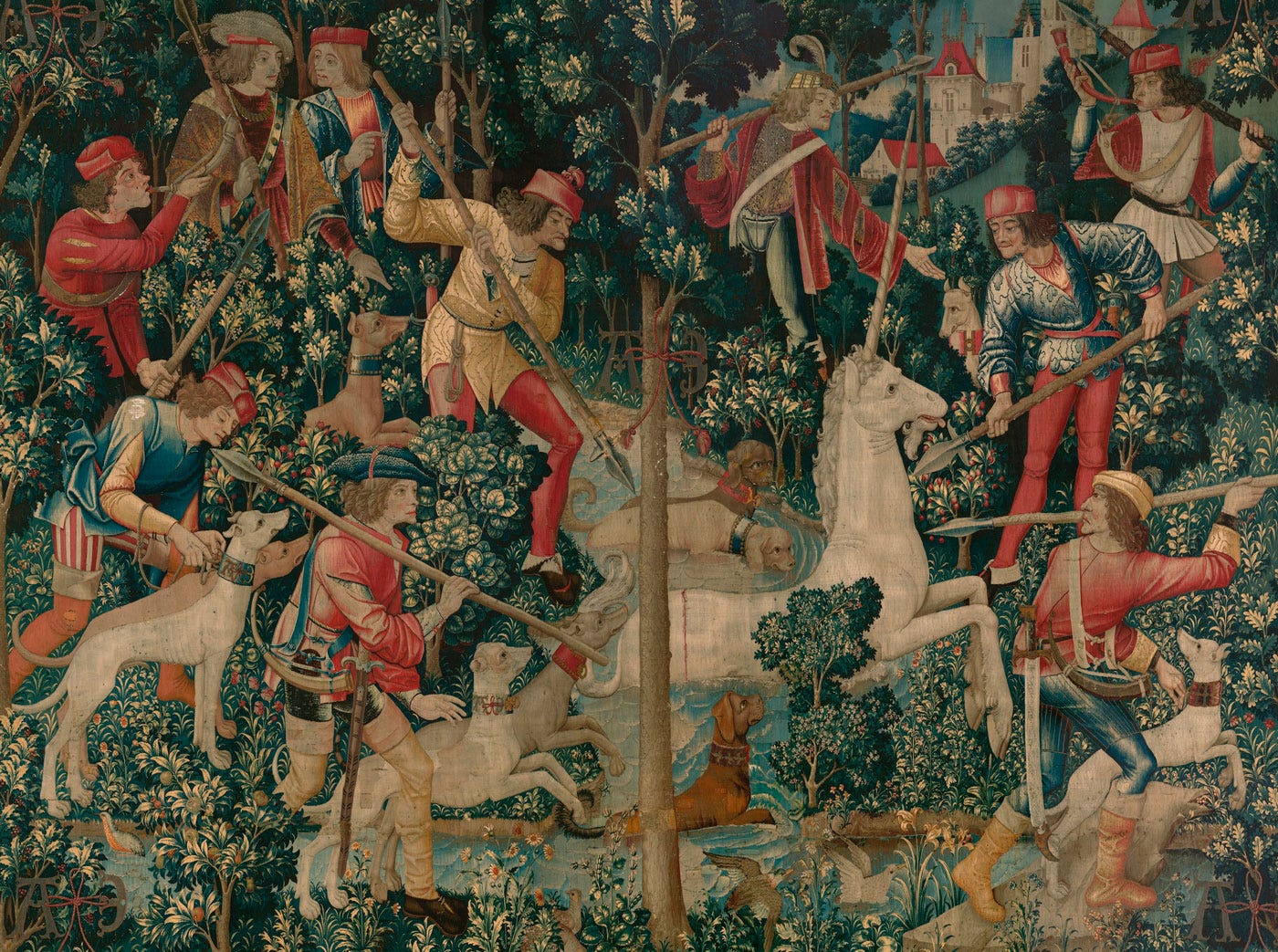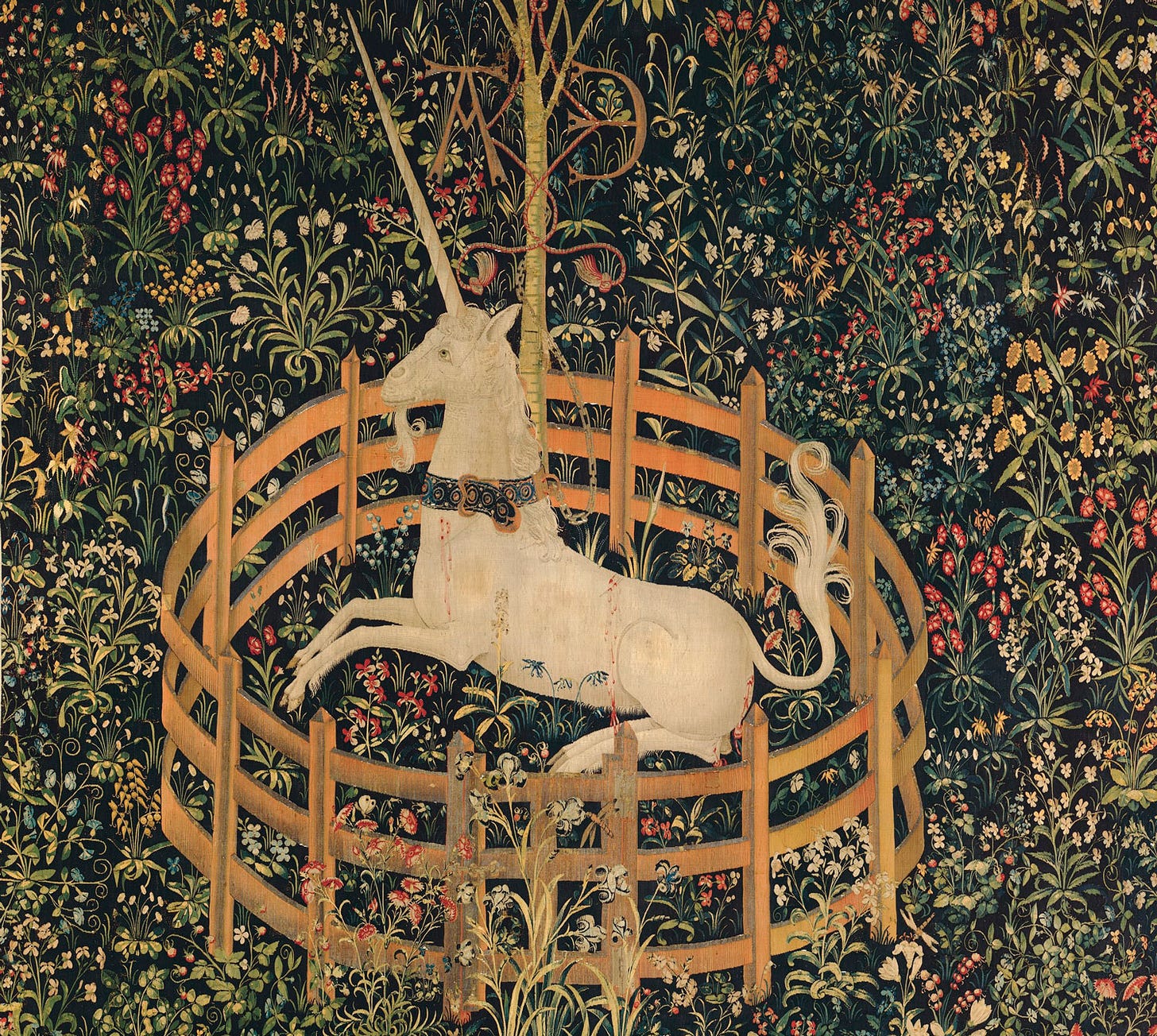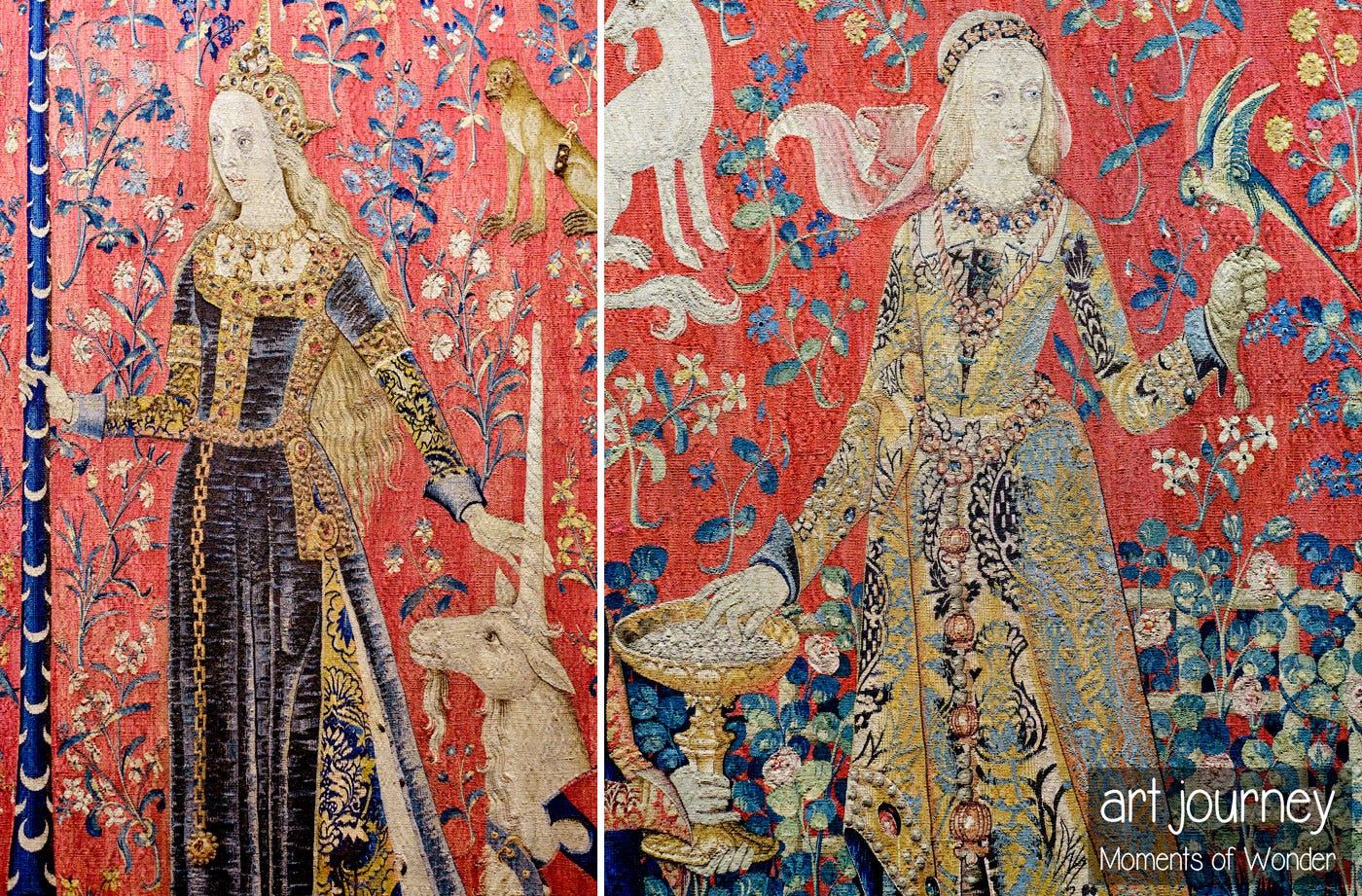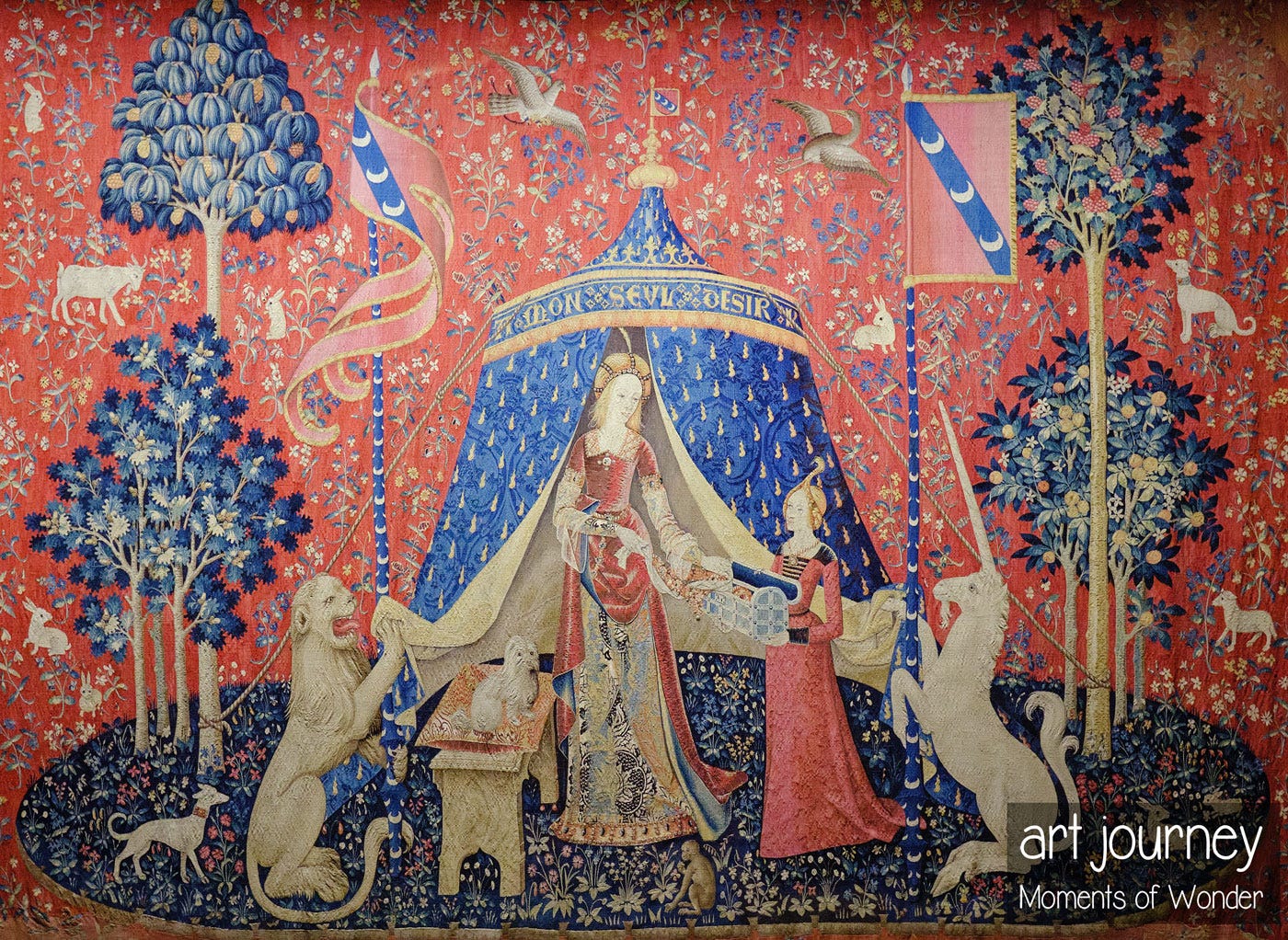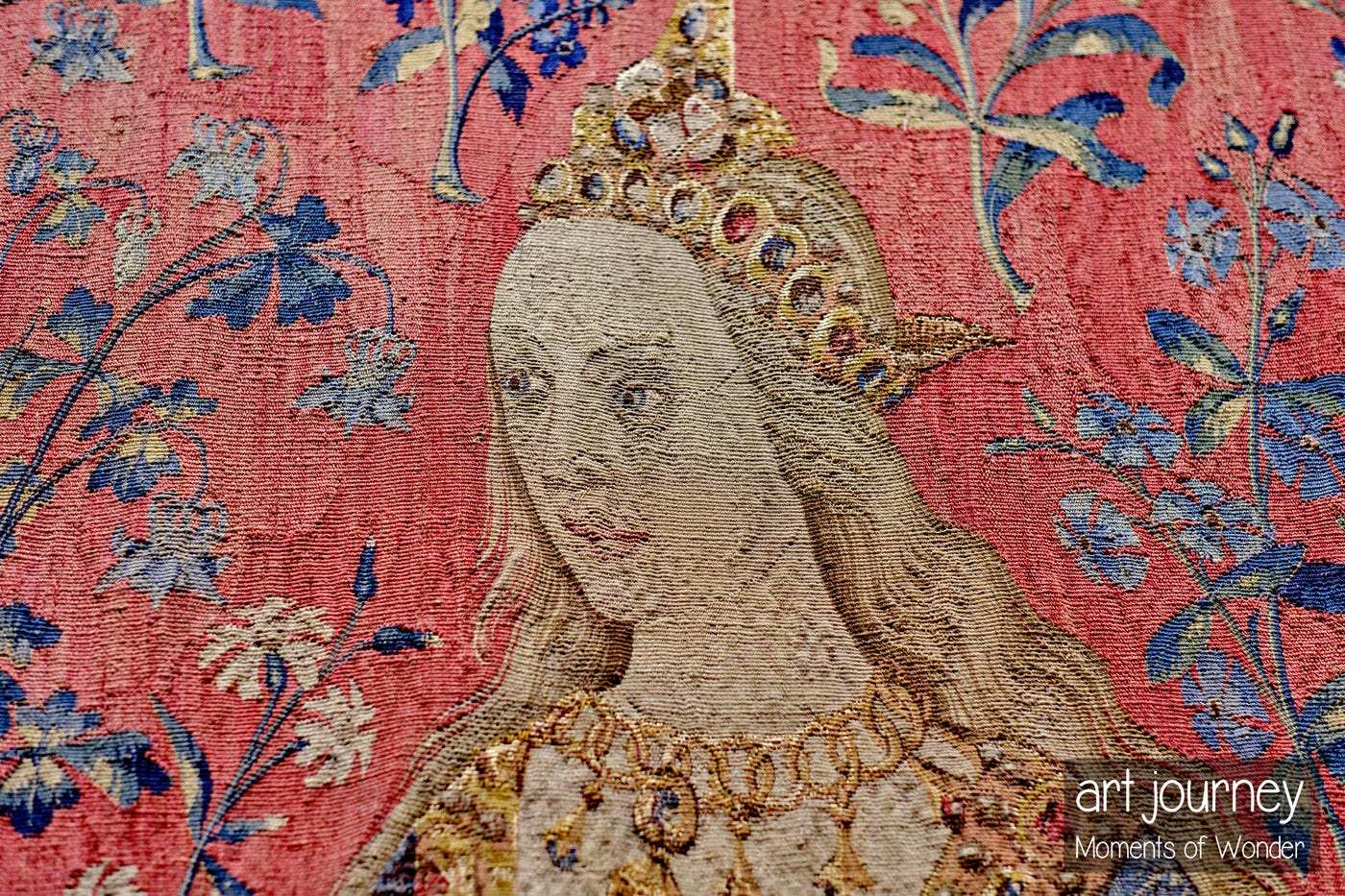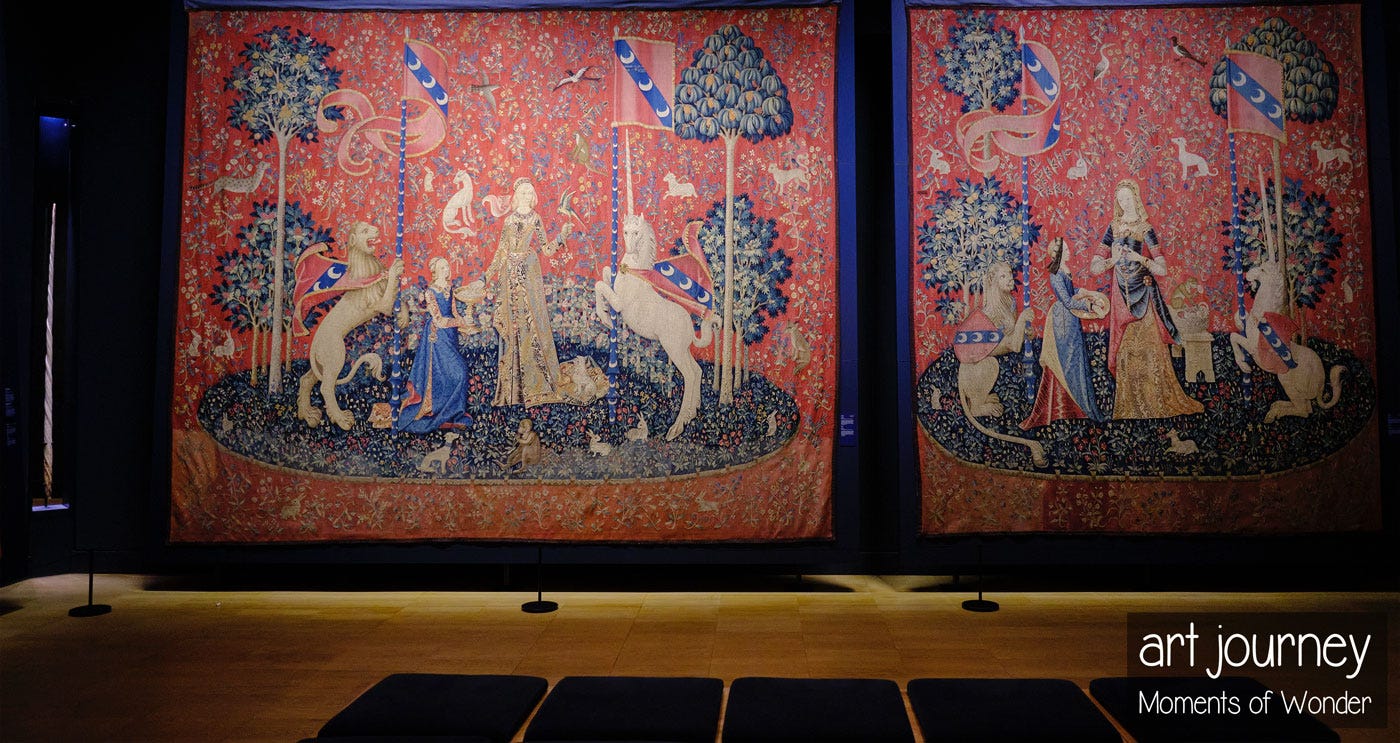Unicorn masterpieces from the age of wonder
The Paris and New York unicorns' tapestries.
Our story ends in New York and Paris and starts in an age of myth and wonder.
Ancient Greek texts and the Bible mention unicorns. Even if no one had ever seen an actual unicorn, they were real, as clergy, scholars, and doctors all agreed that unicorns existed.
That is why the photo above is of a genuine unicorn horn. It was part of the treasure of Saint-Denis Basilica, supposedly gifted to Charlemagne and passed on from King to King. Hence, it was an extraordinarily prestigious treasure kept with the crown of France.
Today all you need is to spend two minutes online to discover that there are small whales with a long tusk. But they were genuine in an age when Kings’ and Popes’ libraries only held 1,000 books, and everyone accepted that unicorn horns cured the plague and dissolved poison.
This was an excellent opportunity for the adventurous merchants who discovered narwhal tusks and offered them to Kings who were happy to pay for their weight in gold.
Tapestries, the peak of luxury
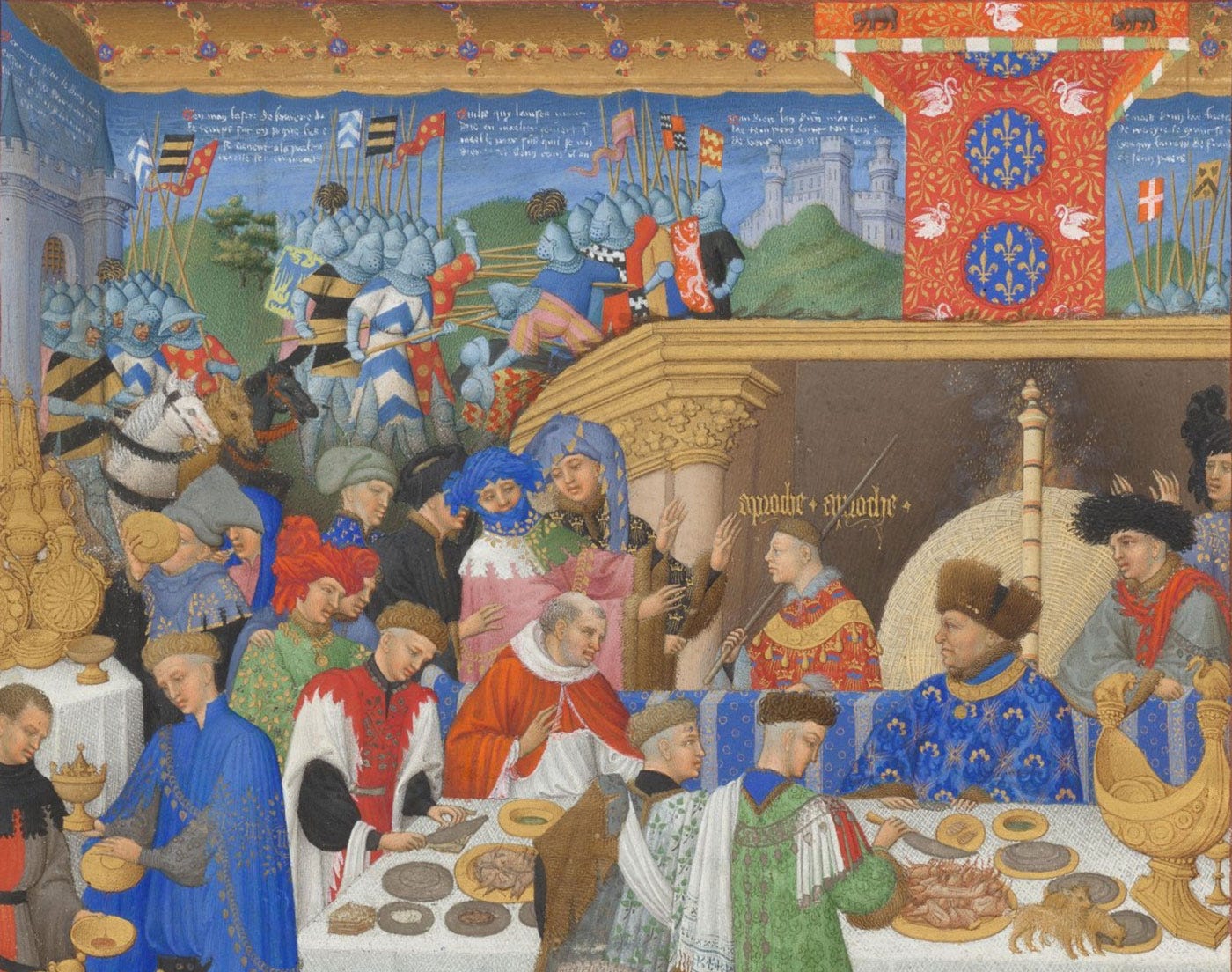
Dear reader, please consider that a tapestry is more expensive than a painting. First, one made a painting to use as a model. Another way to consider them is that medieval tapestries are like precious books enlarged to wall size.
It was then sent to a tapestry manufacturer, where it was woven with wool, silk, and sometimes gold and silver. Using precious metals to weave tapestries was only part of the cost; the other was color.
The dyes were made from plants, shells, and insects, and metals were added to fix the colors. The color was so expensive that the largest cathedral in France was paid thanks to blue dye.
In their prime, entering a castle whose rooms were covered in tapestries from floor to ceiling was as dazzling as a Technicolor movie.
The other facet of their cost is workmanship. Pay miniature and large-scale painters to produce the model, likely in Paris, then send the result to Brussels to be woven by large teams of weavers.
When one man needed one month to weave one square ward of tapestry, commissioning a series of tapestries meant employing an entire workshop for years.
Rare survivors from an age of wonder
As we saw in the story "Birth of 'Gothic,' the Architecture of Light," tarring anything from the Middle Ages as coming from the age of ignorance—not helped by the presence of fantastic animals—means masterpieces were, at best, left to rot, and at worst, destroyed.
Dear reader, contemplate for a minute that many cathedrals in France still stand thanks to the fact that it was too costly to destroy and rebuild them.
The tapestries with gold and silver threads were burnt to recycle the precious metals. Next, the French Revolution destroyed most artworks depicting Kings and royal insignias.
Texts confirm the existence of at least fifty unicorn tapestry series, but only two survive. What happened?
Masterpieces salvaged from the field, the barn, and decaying castles
In America, a castle is rare, as it was transported at a significant cost from France and rebuilt in America. In France, even after the wholesale destructions of the French Revolution—entire castles and churches sold off stone by stone—there are still 40,000 castles...
Not long ago, one could buy a castle, its estate, and its beautifully decorated interior for one franc, equivalent to a dime. Of course, there was a catch: the cost of fixing the roof and trying to stay warm. One could live in a castle, descend from an old noble family, yet shiver all winter.
Humidity and bugs are the enemies of tapestries, so imagine thousands of castles with faded, decaying, and out-of-fashion tapestries on their damp walls.
It's not only the lord of the castle who is cold but horses and farm animals. That is why tapestries have been cut off to keep horses warm in winter and protect crops.
The Paris Unicorn tapestries were discovered in the 1840s when the curator who described them begged that they be purchased lest the rats keep eating them. They were displayed in an official's office, and even after being informed of their importance, he still cut off pieces to use as carpets.
That was not the worst news: there were more pieces described as even more beautiful. But the castle's former owner had them cut into pieces to put on carts.
As to the New York series, they spent fifty years protecting potatoes and fruit trees from the harshness of winter.
Dear reader, now that you understand what these masterpieces went through, I trust you can forgive that they have faded. Let's wonder at them now.
New York Unicorn tapestries
Like its Parisian twin, this series is likely a wedding tapestry and needs decoding. It is a hunt in which the unicorn is pursued and dies. Of course, the key part is the last picture: the unicorn is alive and well but behind a fence.
The symbolism concerns a resurrected Christ in a paradise-like garden, and the fruits—pomegranates—allude to the Virgin Mary. The unicorn wears a collar and is now tamed, which is the marriage story: the bridegroom chained by his Lady's love, the fruits the hope for children.
While it initially seems violent, this is a love tale, as it befits a wedding.
The Lady and the Unicorn
The Paris series in the Musée Cluny also needs decoding.
In the first image, the lady touches the already-tamed unicorn. Then she feeds a parrot, holds a flower, plays the organ, and presents a mirror to the unicorn, which admires itself in it.
What could it possibly mean...? Don't overthink it: the five senses.
Dear reader, I translated for you a section of "The Animal Book of Love," a famous medieval book that gives us the first key:
Man possesses five senses: sight, hearing, smell, taste, and touch.
Like the unicorn, I was taken by the sweet smell of the virgin damsel.
And Love, a skillful huntsman, put on my path a maiden whose sweetness in which I fell asleep and made me die of death as belongs to Love.
The Sixth Sense
Now comes the more difficult part, the sixth sense. The tent behind the Lady states, "Mon seul désir," which means "my only desire." The A and I on both sides are probably the first letters of the bride and groom's names.
Drum roll: the sixth sense is the heart. And not just as a kind-hearted person. I got to the trouble of translating for you a sermon denouncing lust.
I will talk of the six senses, five outside, and one inside, the heart. The heart demands reason.
Heart, Mouth, Eye, Taste, Hearing.
Of the heart, whoever saves one's heart saves one's soul.
That is where the sixth sense, the heart, is an allegory of a life of virtue while also being about love and desire.
Who Is the Lady and the Unicorn?
The tapestry was likely created around 1500, but it is unclear who commissioned it. The clue is that the flags with the three moons belong to the Le Viste family.
That is where the educated guess comes from: the names are probably that of Antoine Le Viste and his bride, Jacqueline Raguier.
And that is why the letters A and I on the tent are those of Antoine and Jacqueline. While it is not sure—and unlikely to ever be—it means the Lady's name would be Jacqueline Le Viste.
In New York or Paris, as well as in this story, pondering the survival of these masterpieces and trying to decode their marriage meaning is a great Moment of Wonder.
And if you thought unicorns were rare, the following story will deliver seven-headed dragons!
Notes
https://www.musee-moyenage.fr/en/collection/the-lady-and-the-unicorn.html
The Unicorn Tapestries in The Metropolitan Museum of Art
https://artjourneyparis.com/cluny-museum-private-tour.html
Le bestiaire d'amour par Richard Fournival.
Sermon Poenitemini sur la luxure de Jean Gerson, prononcé à Paris le 17 décembre 1402.







